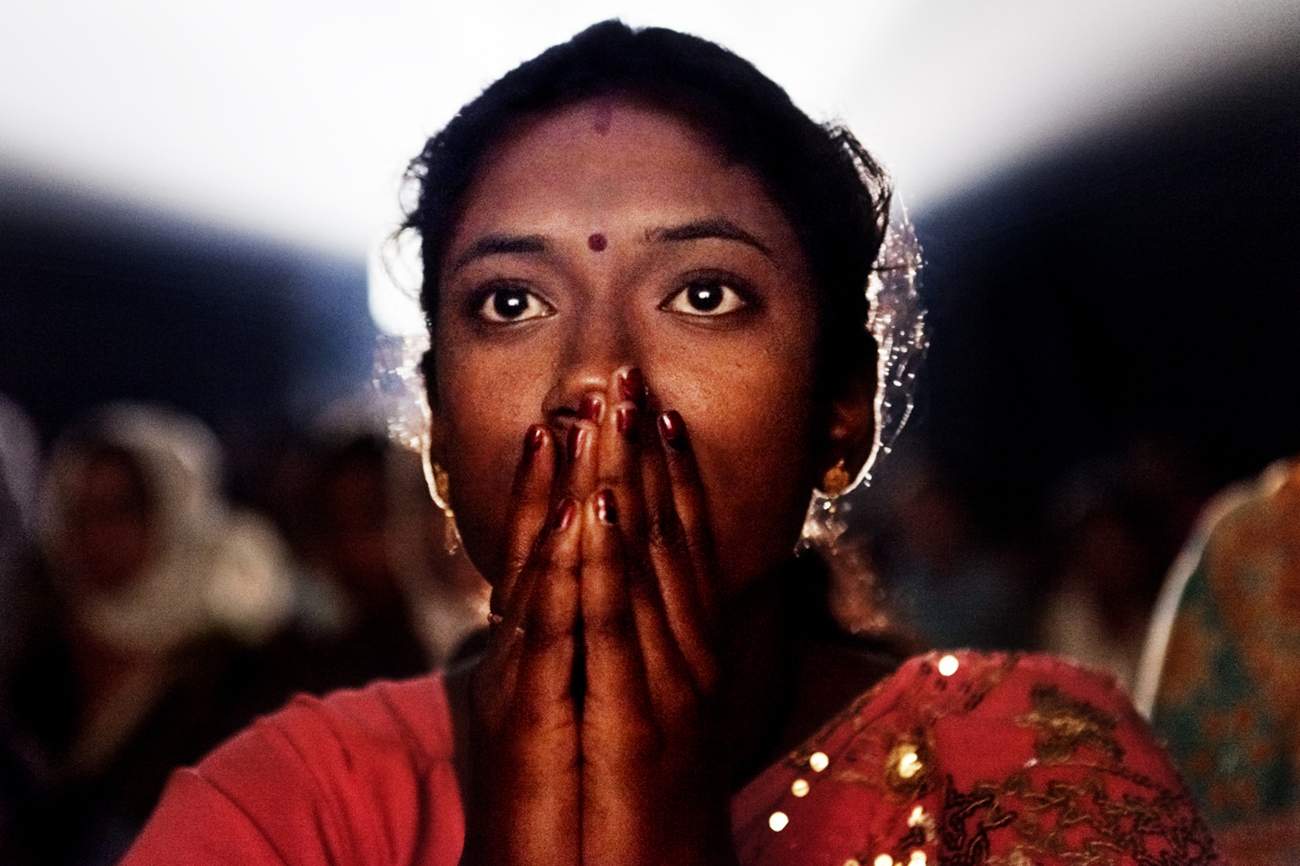Until February 18, 2024, the Magazzino delle Idee in Trieste is hosting the exhibition India Today. 17 Photographers from Independence to the Present Day, curated by Filippo Maggia, produced and organized by ERPAC - Ente Regionale per il Patrimonio Culturale del Friuli Venezia Giulia. The exhibition project brings together seventy years of Indian photography, presenting more than 500 works including photographs, videos and installations.
India Today aims to trace a socio-historical journey from Mahatma Gandhi and the decade immediately following independence from the British Empire in 1947 to the present day. From the post-colonial past to its emergence among the major international economies, the exhibition aims to bear witness to the radical transformation in which the Indian subcontinent is a protagonist, strong with exponential development that has to reckon with profound contradictions and social inequalities. The photographic gaze of seventeen artists seeks to capture the multiple aspects of this evolution, between tradition and change: Kanu Gandhi, Bhupendra Karia, Pablo Bartholomew, Ketaki Sheth, Sheba Chhachhi, Raghu Rai, Sunil Gupta, Anita Khemka, Serena Chopra, Dileep Prakash, Vicky Roy, Amit Madheshiya, Senthil Kumaran Rajendran, Vinit Gupta, Ishan Tanka, Soumya Sankar Bose, Uzma Mohsin.
The exhibition presents the works of these seventeen artists, ranging from established authors to new protagonists of contemporary Indian photography, following a chronological order, from the mid-20th century to the new millennium, devoting ample space to contemporary authors. A narrative in images accomplished by the artists who have taken photographs by living the direct experience. In the exhibition itinerary, each author is introduced by a statement describing the genesis and research development of the work done.
“The process of sudden and unstoppable economic and industrial evolution taking place in India since the end of the last millennium,” writes Filippo Maggia in the catalog, “is causing serious consequences, both social, such as issues of gender, identity and religion, and environmental. The inevitable depopulation of the countryside and rural areas, from the foothills of the Himalayas to the far south of Kerala, has led to the overcrowding of metropolises such as Mumbai, New Delhi or Calcutta, with a severe impact on the environment, sometimes even involving the coercive displacement of millions of people from one region to another. It is these issues that Indian photography is mainly concerned with today, now emancipated from the traditional image of the exotic colorful India of Salgarian memory.”
The exhibition is accompanied by a catalog, edited by Filippo Maggia, published by Electa Photo.
Kanu Ghandi: grandson of the Mahatma, portrayed him during the years when he professed civil disobedience and nonviolent activism.
Bhupendra Karia: explores post-independence rural India, focusing on the social, political and environmental challenges facing the country.
Pablo Bartholomew: recounts his experience as a 20-year-old hungry for life between Delhi, then Bombay, and Calcutta in pursuit of inquiries into difficult social areas.
Ketaki Sheth: narrates the changing Bombay in the late 1980s and early 1990s with the building boom, the massive arrival of internal migrants, and the contrast between tradition and change.
Sheba Chhachhi: an activist and chronicler of India’s feminist movement, she interprets the stories of seven women activists through “staged” portraiture.
Raghu Rai: considered one of the masters of Indian photography, he brings together in his work four decades of Indian history, from the 1960s to the 2000s.
Sunil Gupta: presents a kind of private diary, in which the rural India of his home villa serves as a backdrop to his troubled existence.
Anita Khemka: with intensive work spanning two decades, she has followed the evolution of Laxmi, a very popular transgender activist in India, whose natural directness and genuineness she recounts.
Serena Chopra: attended the Majnu ka Tilla refugee camp for eight years, collecting images and sound testimony, writings and drawings made by Tibetan exiles.
Dileep Prakash: investigated postcolonial legacies with the aim of understanding how much the link between the two different cultures continues and how.
Vicky Roy: her work addresses one of the most topical dramas in Indian society, orphaned or abandoned children. She returns a picture of them full of life and hope with a plea to be able to give them a future.
Amit Madheshiya: In his photographs he portrays the lost, astonished and rapt faces of herders and farmers watching, for the first time, the screening of films under improvised tents of traveling cinemas.
Senthil Kumaran Rajendran: chronicles the difficult coexistence of tigers and humans amidst population growth, new settlements and deforestation.
Vinit Gupta: his work focuses on ecology and the struggles of people threatened by industrial interests that disrupt their identity and traditions.
Ishan Tankha: testifies to the protests of the jal satyagrahis who are fighting against the construction of dams that would result in the displacement of hundreds of thousands of people and the adivasis who are struggling against the exploitation of their coal- and iron-rich lands.
Soumya Sankar Bose: through oral and video testimonies reconstructed the Marichjhapi massacre in West Bengal perpetrated by police forces against lower caste Bengali refugees in 1979.
Uzma Mohsin: analyzes mechanisms and consequences of civil proposals in a country where dissent is considered on par with “disloyalty, anti-nationalism and sedition” as she recalls.
For info: https://magazzinodelleidee.it/
Hours: Tuesday through Sunday 10 a.m. to 7 p.m. Closed Mondays.
 |
| At the Magazzino delle Idee in Trieste, 17 photographers tell the story of India from Independence to today |
Warning: the translation into English of the original Italian article was created using automatic tools. We undertake to review all articles, but we do not guarantee the total absence of inaccuracies in the translation due to the program. You can find the original by clicking on the ITA button. If you find any mistake,please contact us.